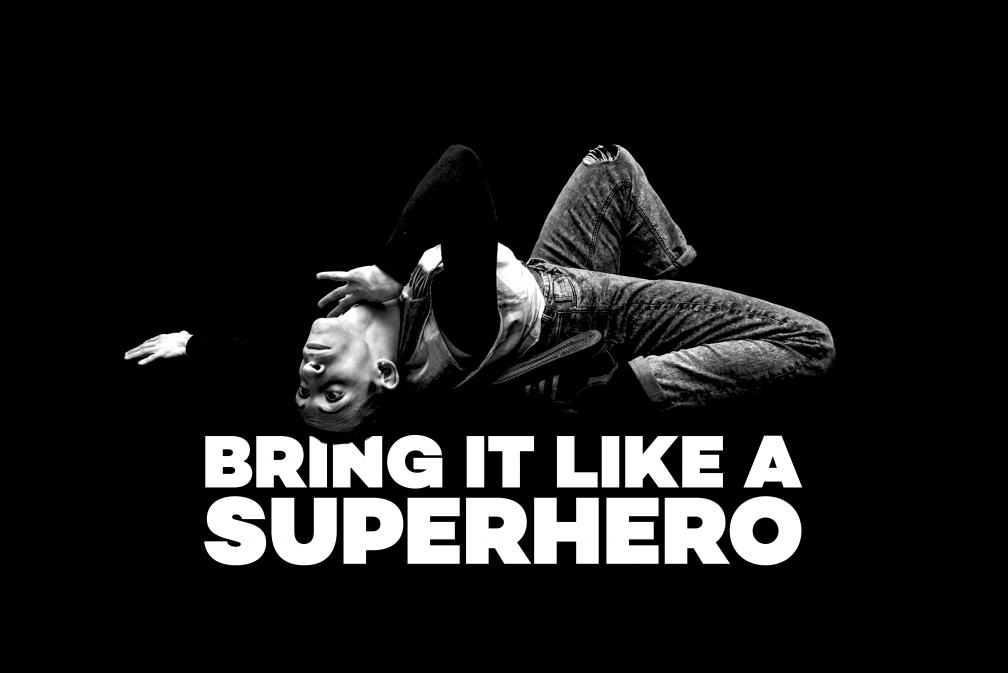 Culture
Culture
Bring it like a superhero: London's vogue scene is rising
Ballroom culture is thriving in the UK capital
It's midnight on a cold Valentine's Sunday in February in East London, but the heat is rising from Trapeze Bar's basement dancefloor. The final category of the Twisted Love Affair ball is going down to the wire: London's own divaD Magnifique, clad in red and black, is involved in a nail-bitingly tight battle against Paris’s Karteer Mugler for a place in the second round of Vogue Fem. The four judges are split and the two competitors have to keep battling. The sweat is visible as they stunt, duckwalk, spin and dip into sudden, impossible positions, but no matter how hard they go – twice, three times, four times – the deadlock isn't broken. Breaking with tradition, MC Jay Jay Revlon brings the crowd in as a tiebreaker, but there's still no clear winner. To whoops and cheers, Jay Jay sends both through. Exhausted, the two competitors embrace, then get ready to do it again.
With over 200 attendees and 60 competitors across 10 categories, the Twisted Love Affair ball is the largest in London for at least two years and illustrative of a freshly burgeoning ballroom scene in the capital. Jay Jay is the father of the House of Tea, one of two London-based Kiki houses that have formed in the city. A couple weeks previously, he co-hosted the Inspirational Mini Ball with New York's own Byrell The Great at Hub 16 in Dalston, another basement venue that's become a key gathering place for the sundry fabulous misfits drawn to the aspirations, liberation and, above all, community encapsulated by the culture. It’s also home to the first ever regular club night dedicated to voguing in London, Realness, run by the House of Lady Di. If the Twisted Love Affair provided the spectacle, Realness is where the behind-the-scenes practice happens. Voguers try out their moves, from the angular hand movements, inspired by martial arts and hieroglyph shapes, to the breathtaking "death drops" to the floor, and bond with like-minded souls. "It's a safe space to come as you are and let it all out," smiles Benjamin Milan, the Lady Di house father and choreographer to FKA twigs, after the January edition.
Ballroom as a culture and community has long been a key part of queer history, created by some of the most marginalised groups of 70s New York out of sheer necessity to carve out a space to exist freely. In the past decade or so, that space has also opened up online, so it's unsurprising that the internet was crucial to introducing ballroom to the key players in today's scene. Jay Jay reminisces about stumbling across dance videos on YouTube while at college; later, his need to be involved was such that he would call in sick to work just to go to workshops in the then burgeoning Amsterdam scene. It was a Hercules And Love Affair video (‘You Belong’) that first caught the eye of Harli Khan, the mother of the UK chapter of the House of Khan; both she and divaD used social media and the internet voraciously to research vogue's rich, complex history and to make connections with scenes in the US and Europe.
To many queer kids who had hitherto only known of voguing through its few mainstream representations – Madonna’s 1990 hit ‘Vogue’, for example, and Paris Is Burning, Jennie Livingston’s classic documentary of the same year – discovering that it was alive and well was a revelation. Manchester ballroom guru Cvnt Traxxx went had a personal revelation following a 2009 drag ball in Glasgow and soon discovered the work of DJs such as New Yorker MikeQ, who plays every week at Vogue Nights and is part of the Qween Beat squad, and Houston producer B. Ames. “It was so exciting to find that this culture isn’t dead or just a historical artefact,” he says. He also explains that, for him, the scene is a revitalisation of moribund house music. "In the last decade, I'd felt house was very much removed from its original context - dance music primarily made for queer people, people of colour, marginalised people. I wanted to make music for dancers, not a room of middle class white people nodding their heads. Ballroom is the essence of what house is: it's very inspiring for me as a producer knowing there are specific sounds that trigger specific moves." Its wider appeal, he says, is also an ideological one. "The reality is that society isn't going to give you your dreams if you're a queer POC," he explains. "Voguing is all about aspirations and dreams, especially ones that people in the culture know are denied to them on a daily basis. You enter the world of ballroom and it's this dreamspace where you can live out your secret desires and make them come true."



